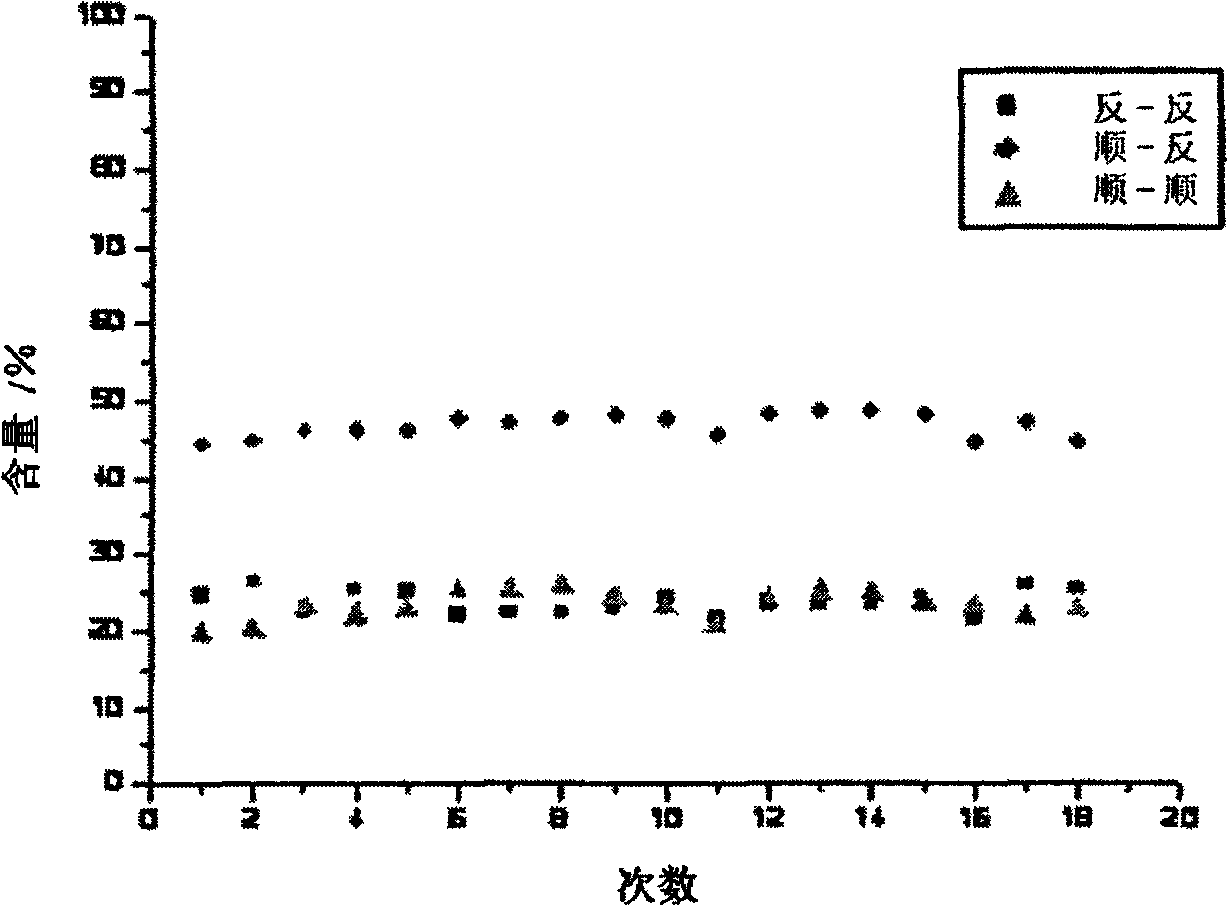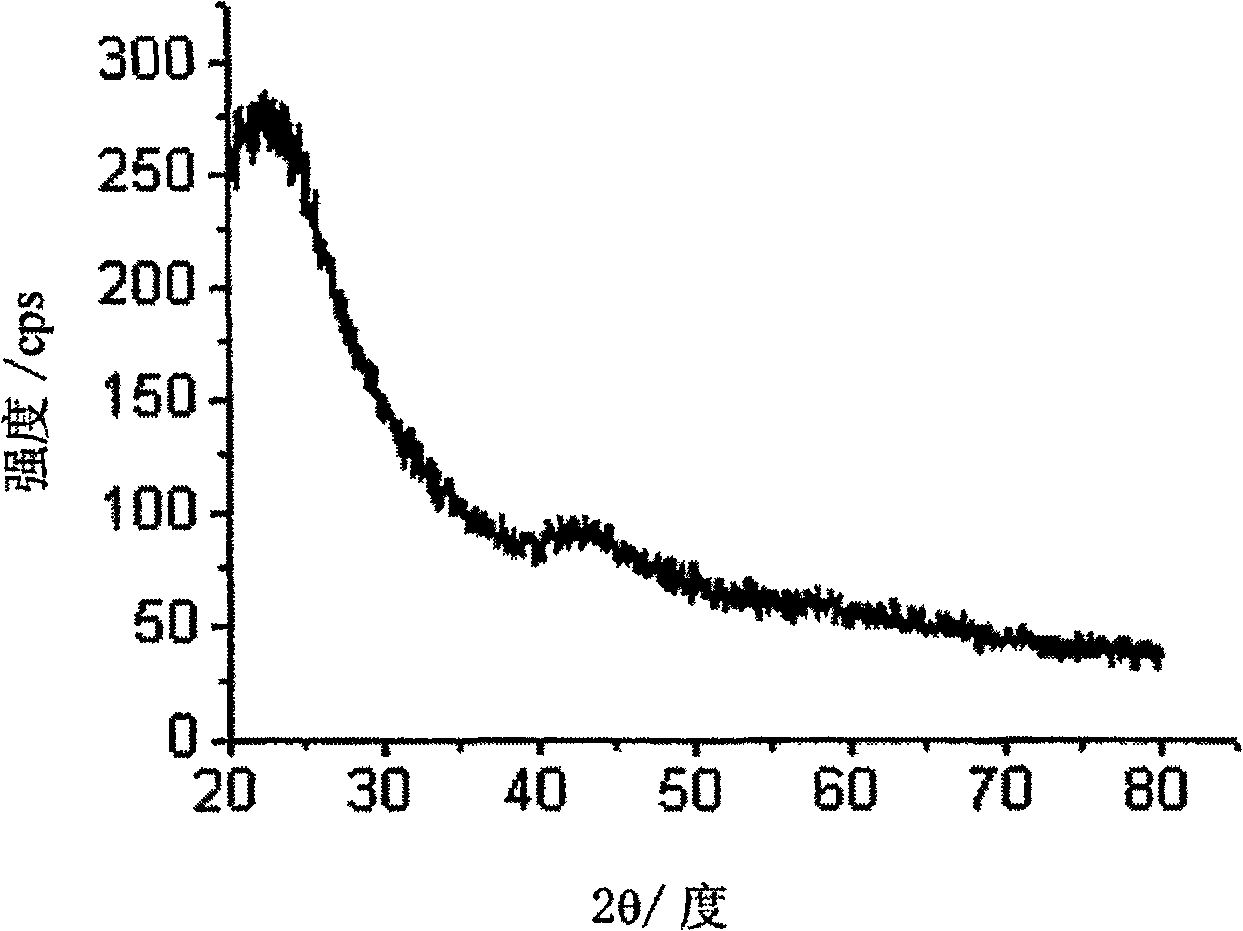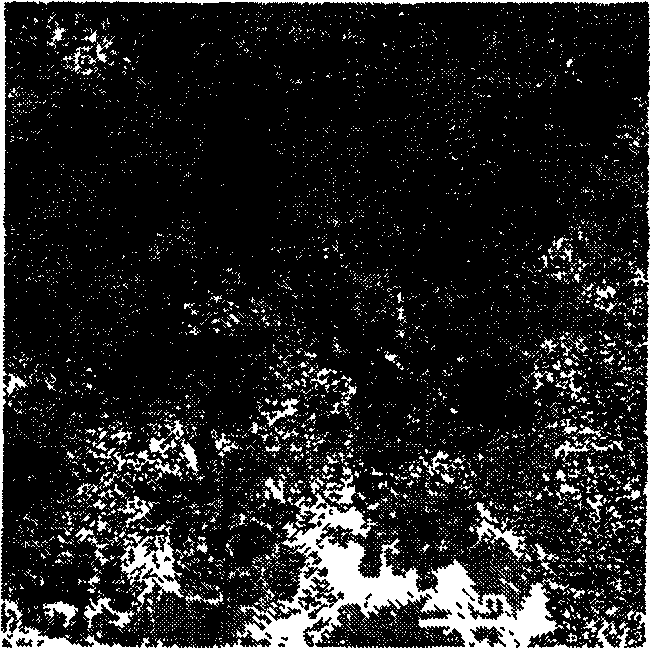Method for producing H12MDA through hydrogenation reaction
A technology of diaminodicyclohexyl and diaminodiphenylmethane, which is applied in the field of preparing 4,4'-diaminodicyclohexylmethane through hydrogenation reaction, can solve the problem that sol catalysts are not easy to separate and reuse products, and achieve Ease of regeneration, high activity and durability
- Summary
- Abstract
- Description
- Claims
- Application Information
AI Technical Summary
Problems solved by technology
Method used
Image
Examples
Embodiment 1
[0059] Preparation of Catalyst 1
[0060] 0.1g Ru(NO 3 ) 3 Dissolve in 50mL water, add 3.9mL of 5g / L Tween20 (manufactured by DuPont) solution into Ru(NO 3 ) 3 In the aqueous solution, stir for 1h, add 4.5g / L NaBH dropwise 4 40mL of aqueous solution, after the reduction is completed, the metal ruthenium colloid protected by Tween20 is obtained. Then 2 g of activated carbon was added, stirred for 2 h, filtered and washed with water to obtain a 3% Ru / C catalyst. The average particle diameter of metal ruthenium colloidal particles measured by the HRTEM method (dispersion in ethanol, copper grid measurement) is 3 nm. The loading rate of metal ruthenium on the carrier reaches 99.8%.
Embodiment 2
[0062] Preparation of Catalyst 2
[0063] 0.1gRuCl 3 3H 2 O was dissolved in 50mL water, and 5mL of 5g / L Span20 (manufactured by DuPont) solution was added to RuCl 3 In the aqueous solution, stir for 1h, add 4.5g / L NaBH dropwise 4 Aqueous solution 40mL, after the reduction is completed, Span20-protected metal ruthenium colloid is obtained. Then 2 g of activated carbon was added, stirred for 2 h, filtered and washed with water to obtain a 3% Ru / C catalyst. The average particle diameter of metal ruthenium colloidal particles measured by the HRTEM method (dispersion in ethanol, copper grid measurement) is 3.2 nm. The loading rate of metal ruthenium on the carrier reaches 100%.
Embodiment 3
[0065] Preparation of Catalyst 3
[0066] Add 0.2589g of ruthenium acetate into 0.2732g of Span20 and 0.1943g of Tween20 and dissolve in 400mL of water. Add 0.1374g NaBH dropwise under vigorous stirring 4 200mL aqueous solution of Span20 and Tween20 protected metal ruthenium colloids were obtained after the reduction was completed. Add 2 g of activated carbon to the colloidal solution, stir for 1.5 h, filter, wash with water, rinse with THF, and prepare a 5% Ru / C catalyst. The average particle diameter of metal ruthenium colloidal particles measured by the HRTEM method (dispersion in ethanol, copper mesh) is 2.8 nm. The loading rate of metal ruthenium on the carrier reaches 100%.
PUM
| Property | Measurement | Unit |
|---|---|---|
| particle size | aaaaa | aaaaa |
| particle size | aaaaa | aaaaa |
| particle size | aaaaa | aaaaa |
Abstract
Description
Claims
Application Information
 Login to View More
Login to View More - R&D
- Intellectual Property
- Life Sciences
- Materials
- Tech Scout
- Unparalleled Data Quality
- Higher Quality Content
- 60% Fewer Hallucinations
Browse by: Latest US Patents, China's latest patents, Technical Efficacy Thesaurus, Application Domain, Technology Topic, Popular Technical Reports.
© 2025 PatSnap. All rights reserved.Legal|Privacy policy|Modern Slavery Act Transparency Statement|Sitemap|About US| Contact US: help@patsnap.com



